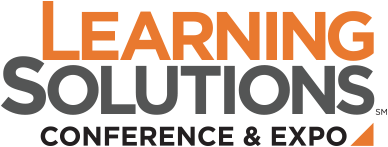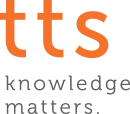About the
Learning Guild
The Learning Guild is a community of practice for those supporting the design, development, strategy, and management of organizational learning. As a member-driven organization, we aim to create a place where learning professionals can share their knowledge, expertise, and ideas to build a better industry—and better learning experiences—for everyone.
Join us as a Community Member for free or as a Member+ to gain access to our vast well of expertise.
Conferences
Be in the know on top industry events like DevLearn and Learning: The Learning Leaders Conference.
Learning Solutions Magazine
Online Conferences
![]() Take an in-depth look at contentious topics and gain new skills, tools, and perspectives. Learn more.
Take an in-depth look at contentious topics and gain new skills, tools, and perspectives. Learn more.
Guild Research
![]() Access evidence-based reports and resources to help you understand the depth of critical eLearning topics.
Access evidence-based reports and resources to help you understand the depth of critical eLearning topics.
Webinars
![]() Connect with learning experts and discover ideas, tips, and techniques to improve your skills. Learn more.
Connect with learning experts and discover ideas, tips, and techniques to improve your skills. Learn more.
Newsletters
![]() Insider and Update newsletters are quick-reads designed to keep you updated on Guild news and resources.
Insider and Update newsletters are quick-reads designed to keep you updated on Guild news and resources.
Guild For Good
![]() This program celebrates those in our community who go above and beyond to create a better tomorrow for all.
This program celebrates those in our community who go above and beyond to create a better tomorrow for all.
Job Board
![]() Post your resume, find a great new job, or a great new employee using the Learning Guild's Job Board.
Post your resume, find a great new job, or a great new employee using the Learning Guild's Job Board.
Other Benefits
![]() Annual Salary & Compensation Report, conference handouts, networking opportunities, and more.
Annual Salary & Compensation Report, conference handouts, networking opportunities, and more.
Filter By:
Sessions in Block 9
It’s estimated that 50 to 90 percent of training is “scrap learning”—content that is delivered but never actually applied back on the job. Scrap learning serves no practical purpose and is essentially a waste of everyone’s time. L&D professionals can’t help but be uncomfortable with those figures, but nothing in their traditional training bag of tricks has proven capable of eliminating that waste. It’s time to alter the training paradigm.
Read MoreTraining professionals typically fall along a continuum with varying levels of access to their target audience. That amount of access often influences, consciously or not, the techniques they use to analyze their audience. Without adequate awareness of this continuum and where they fall on it, designers risk depending on their own assumptions about their target audience and may end up overlooking more effective analysis strategies that can improve training.
Read MoreLS903 Best-Practices Training Should Steal from Software Development
Concurrent Session
Agile design processes are beginning to change the ways that people create training content. While agile design appeared in the L&D space only in the last few years, they took hold in the software industry much earlier, starting in the mid-1990s. Clearly there is overlap between L&D and the software industry, and if agile design works in both worlds, what other practices used by software development teams could help L&D create better training and work more effectively?
Read MoreSerious games and simulations have the potential to bridge abstract concepts and real-world applications. But too often, simulations limit themselves to lower-level skills like memorization, resulting in glorified quizzes that are expensive to produce but feel disconnected from real decision-making. And when serious games try to engage higher-order skills, they often do so ineffectively. The decisions that are rewarded may be subjective and arbitrary, leaving learners frustrated and disempowered.
Read MoreThe Experience API (xAPI) can improve the ways you create and deliver content, track interactions, and measure performance—and not just in theory. Years of momentum have resulted in numerous use cases for teams seeking to leverage xAPI to better track, measure, and manage their learning efforts. The challenge now is not whether xAPI can be used in your learning environment, but which ways you will choose to use it out of the multitude of options available to you.
Read MoreHow many times have you had to redo a project because you thought you understood the challenge, goals, or requirements but the final product didn’t work as expected or fully solve the issue? As we start to build more complex interactions and applications, we need to improve our process to allow us to test a concept, measure its results, and iterate over and over until it meets the needs of our audience. Thankfully, software development already has a fantastic process for doing this that we can borrow from that field: prototyping.
Read MoreVirtual reality (VR) is a hot topic in technology that offers potential for increased immersion, interactivity, and engagement for your learners.
Read MoreDo you have a difficult time estimating how long a project should take? Do you typically go over your project time estimates, or have some projects that take a lot less time than you thought they would? Would you like to hold your team accountable to realistic time estimates, but don’t have the data to support it? If so, you need a new time-tracking approach so you can more accurately determine your time estimates for training projects.
Read MoreMicrolearning videos under one minute in length require rapid storyboarding and predefined video content structures. As the length of the video decreases, so does the optimal format of the video. Leaving out too many details will have a negative effect on your learning strategy. Every second counts for your learner!
Read MoreECO912 Cultivating the Learning Ecosystem by Connecting with Customers
Concurrent Session
Autodesk’s learning ecosystem is vast, extending far beyond the walls of the corporation to help customers use its tools most effectively. It’s no surprise, then, that driving this change internally at a company-wide scale has been a complex undertaking. There are lots of silos to bridge in order to serve customers well, holistically, and seamlessly.
Read MoreTraditional training requires an event mindset and often stays in the learners’ brains just as long as the event. Hilti needed to find ways to transfer knowledge that builds skills, and then to retain that knowledge until the point of application.
Read MoreIn nature, an ecosystem refers to the combination of a community of living things, the non-living elements that make up their environment, and the many ways in which those individual elements interact. In order for an ecosystem to thrive, the individual components must connect and support one another, balancing each other so that the whole is greater than the sum of its parts. Ecosystems exist in the workplace as well. Understanding the structure and dependencies of an organizational ecosystem can help you build a better learning and performance strategy.
Read More

























